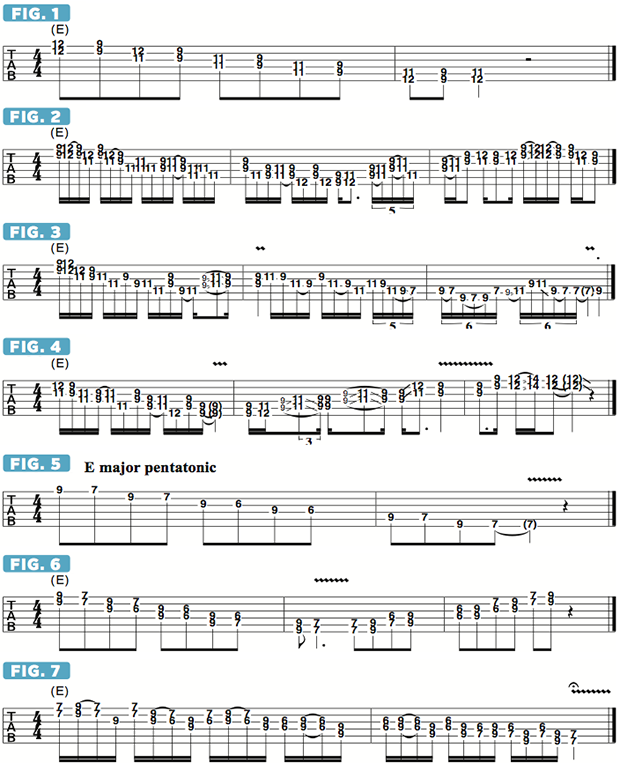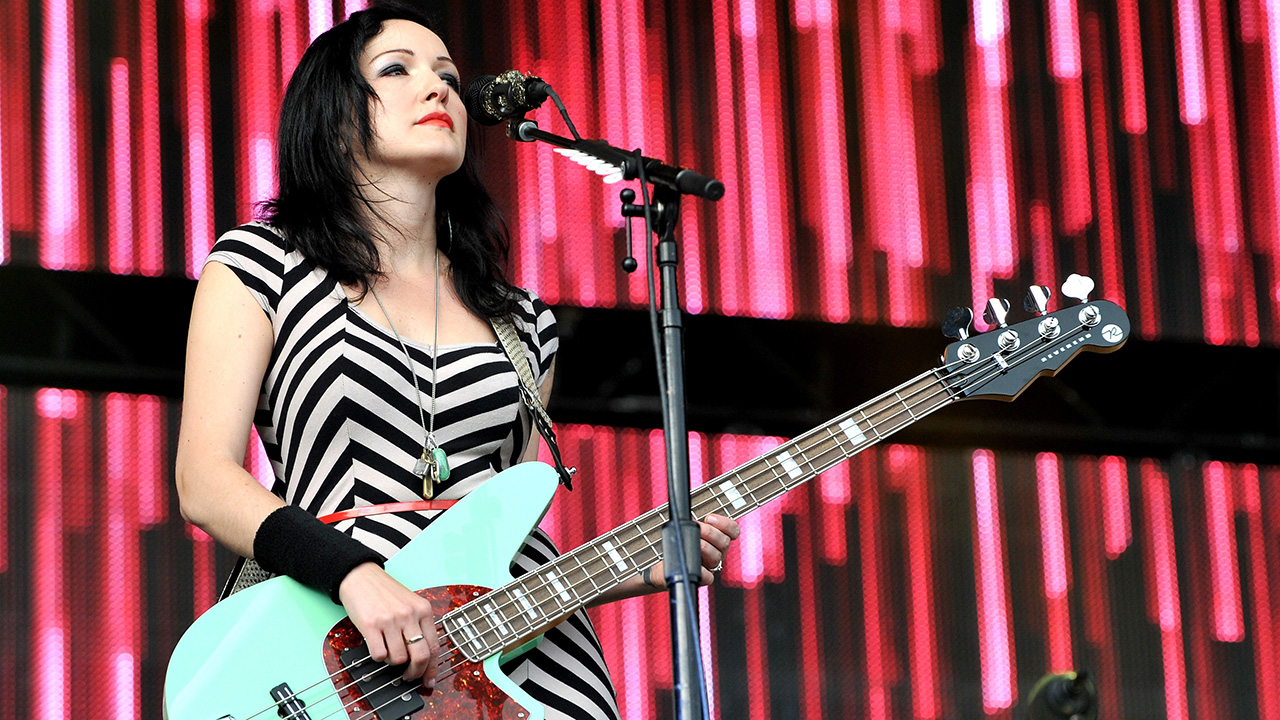How to Harmonize Improvised Melodies Within the Structure of E Major Pentatonic
Learn how to traverse the fretboard while staying diatonic to a specific scale.

Harmonized guitar lines are a staple of classic rock from the Seventies, as exemplified by many well-known songs from the Allman Brothers Band, Lynyrd Skynyrd, Thin Lizzy and Steely Dan, as well as NWOBHM bands, such as Iron Maiden and Judas Priest.
Though most often associated with country music, harmonized lines built from the major pentatonic scale have found their way into a great many rock songs. For example, Jimi Hendrix built many of his lead and rhythm guitar parts from harmonized patterns based on the major pentatonic scale.
To review, major pentatonic is a five-tone scale with an intervallic makeup of the 1(root), 2 (major second), 3 (major third), 5 (fifth) and 6 (sixth). Over the past few columns, we’ve explored harmonized patterns built from thirds that are based on both the major pentatonic and the major hexatonic scales. As the name declares, major hexatonic is a six-tone scale that is identical to major pentatonic but also includes the fourth (spelled 1, 2, 3, 4, 5, 6).
In the previous examples, we chose a pair of adjacent strings and moved from one harmonized pair to the next, traversing the fretboard while staying diatonic to the specific scale. In this month’s column, I demonstrate how to apply the technique to improvised, harmonized two-note melodies played within specific fretboard positions.
When harmonizing in major pentatonic, the majority of these two-note harmonies are fourths (the two notes are four major scale degrees apart); the only time a harmony of a third is produced is when the root note is the lower of the two notes in the pair. FIGURE 1 illustrates descending two-note harmonized pairs on adjacent strings played in ninth position. Most of these note pairs are fretted as barres, with either the index finger, ring finger or pinkie, with only one pair, B with F# below it, fretted with two different fingers.
Now let’s try moving through these note pairs in a free, improvised way, as shown in FIGURE 2: in this example, the “line” is played primarily in steady 16th notes, and as I move from pair to pair, I am listening for a melodic contour to take shape, from which I can develop the line further as I proceed. Another element is the articulation, as I favor hammer-ons and pull-offs as much as possible in order to yield a smooth, even sound.
Another effective approach is to move between two-note pairs and single notes, as this tactic will afford more melodic freedom. FIGURE 3 illustrates this type of approach, as bars 1 and 2 consist mostly of harmonized pairs, while bar 3 is played as single notes only. It can be a little tricky to move smoothly in and out of the pair that’s fretted with two different fingers, so work through FIGURE 4 carefully and try to make those transitions as smoothly as possible.
Now let’s move down to the next lower fretboard position of E major pentatonic, as shown in FIGURE 5. FIGURE 6 illustrates harmonized note pairs played in this position, and FIGURE 7 offers an improvised line that is articulated in a similar manner as FIGURES 2 and 3. Once you have these examples comfortable under your fingers, try devising some harmonized two-note melodies of your own.

Get The Pick Newsletter
All the latest guitar news, interviews, lessons, reviews, deals and more, direct to your inbox!
Guitar World Associate Editor Andy Aledort is recognized worldwide for his vast contributions to guitar instruction, via his many best-selling instructional DVDs, transcription books and online lessons. Andy is a regular contributor to Guitar World and Truefire, and has toured with Dickey Betts of the Allman Brothers, as well as participating in several Jimi Hendrix Tribute Tours.
She wowed Sonny Landreth and Carlos Santana called her the “future” – Erja Lyytinen shares her 6 go-to slide licks for unlocking more expressive soloing
“He combined the passion of Gary Moore with riffs inspired by Zeppelin and Deep Purple, plus unexpected melodic twists like Ritchie Blackmore”: He was one of ’80s rock’s great journeymen – and his searing hot lead work inspired Marty Friedman











